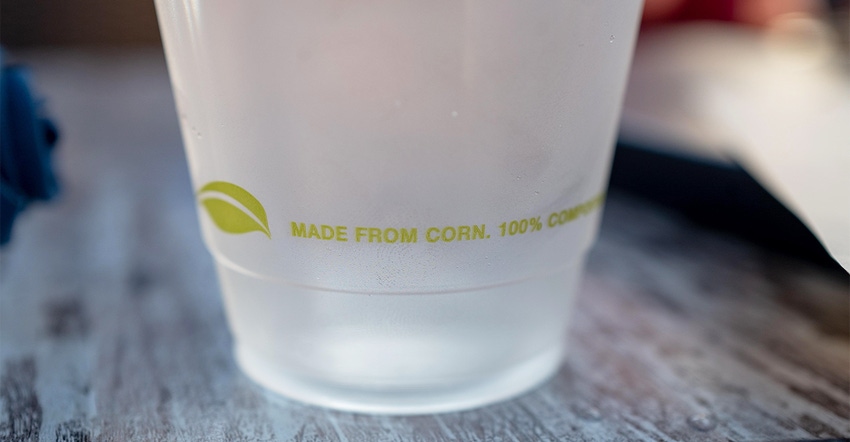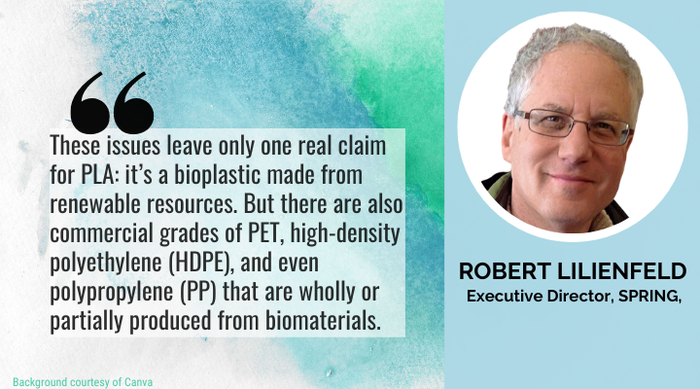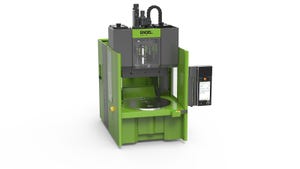PLA Bioplastic Causes More Sleight-of-Hand Confusion
Is packaging made of polylactic acid (PLA) derived from corn intended to be compostable or recyclable? News about the biopolymer creates mixed signals.
November 1, 2022

PlasticsToday published on October 18 an article extolling the recycling virtues of polyactic acid, better known as PLA (Sorting PLA from Municipal Solid Waste is Proven Easy Again).
This is a quote from the article: “Plastic waste collectors and sorters know that using the infrared technology, PLA plastic products can easily be sorted from other municipal waste. In closed loop environments, where PLA bottles and PLA cups are exclusively used, the amount of PLA is sufficiently high to also make it economically feasible to collect, sort and clean the PLA”, says Jürgen Priesters, SVP Tomra feedstock.
For years we’ve been told that PLA items meet the required ASTM D6400 protocols needed to achieve TUV and Biodegradable Products Institute certification specs for biodegradability and can thus be included in industrial composting programs. Now, we’re being told to recycle PLA cups et al since they won’t contaminate the far larger and more valuable PET recycling stream.
But is this really recycling, or is it merely a collection of a material that will head to landfills along with the other RIC 7 plastics?
While the article never discusses residential recycling, it does claim that PLA items can be recycled in closed loop systems, like sports venues and other arenas. Aren’t these the places where PLA items were proudly being included in food waste collections headed for industrial compost heaps? Is this truly a big opportunity for the profitable collection, cleaning, reprocessing, and sale of rPLA resins?

To me, these issues leave only one real claim for PLA: It’s a bioplastic made from renewable resources. But there are also commercial grades of PET, high-density polyethylene (HDPE), and even polypropylene (PP) that are wholly or partially produced from biomaterials.
Finally, I’ve seen plenty of life cycle assessments (LCAs) that point to the environmental superiority of polyolefins. And even when the LCAs are not that clear, the reduced greenhouse gas generation associated with PLA can be offset by the significantly greater water use needed to produce it.
Here’s the bottom line: If PLA and legacy polymers are bio-based, potentially recyclable, and do not contaminate the PET stream, is there a place for PLA?
I asked my LinkedIn readers for their input and here are some representative examples:
“Is PLA recyclable or is it just allowed at a ~2% level because it is a contaminant able to be handled in the PET recycle stream? I suspect it is the later; but would like to be proven otherwise!” - Claire Sand, PhD, CEO, Packaging Technology and Research
“I submit that biobased content and managed end-of-life through industrial composting or recycling is environmentally responsible.” – Ramani Narayan, Distinguished Professor at Michigan State University; BioPlastics thought leader and researcher
“PLA is a big problem here in Australia as we have one of the highest composting standards (AS 4736-2006: Biodegradable Plastic-Biodegradable Plastics Suitable for Composting and other Microbial Treatment). Sadly, many PLA items sold in our market do not meet these requirements therefore they can never be composted. End-of-life PLA requirements are limited, however we do have more options to reuse and recycle plastics compared to these so called biodegradable/biopolymer alternatives.” – Danielle Munro, Director CircMed: Engaging Healthcare to Accelerate the Circular Economy
“Recycling a hydrolytically unstable polymer (PLA) sounds like a nightmare. Imagine all the drying that needs to be done before it can be melt processed.” – Anthony Maiorana, FDA Polymer Chemist
“I personally think that bio-based 'mainstream' polymers (PE, PET, PP) are a requirement for the future (as we move further from crude sources) however, this has to be managed carefully as not to waste farmland on packaging materials. It is not a simple fix! As for PLA itself, recycling this has always been difficult, as it is a challenge to identify.” – Dan Coppins, Packaging Tehnologist, KMI Brands
As you can see, there are many different opinions about what should happen in the future regarding bio-based materials, both those that are recyclable and those that are compostable.
The real issue comes down to this: If the environmental benefits of PLA and polyolefins or PET are roughly the same, what do the functional strengths and weaknesses, along with the costs of these materials, say about their long-term viability in the marketplace?
Robert (Bob) Lilienfeld has been involved in sustainable packaging for 25 years, working as a marketing executive, consultant, strategic planner, editor, writer, and communications expert. He’s President of Robert Lilienfeld Consulting, working with materials suppliers, converters, trade associations, retailers, and brand owners. He is Executive Director at SPRING, The Sustainable Packaging Research, Information, and Networking Group. You can also write him at [email protected] or visit his LinkedIn profile.
About the Author(s)
You May Also Like




